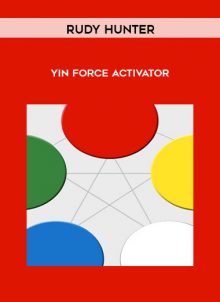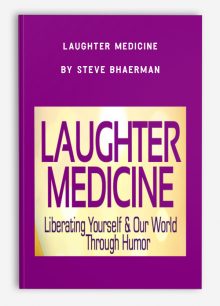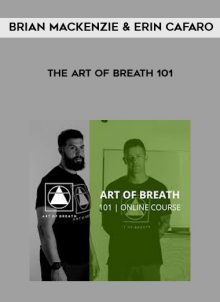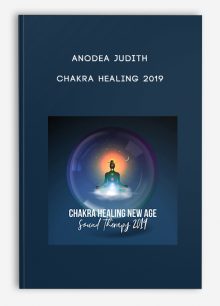Mimi Kuo-Deemer – Take a Break | Digital Download
$25.00
Digital Product
SKU: tab2410
Category: Health – Fitness – Medical
Tags: Mimi Kuo-Deemer, Mimi Kuo-Deemer – Take a Break, Take a Break
Mimi Kuo-Deemer – Take a Break
Yoga for Sacroiliac Stability
Sacroiliac (SI) pain can be common in many yoga practitioners. This series of movements, all done on the back when done daily can help address instability and discomfort in the sacroiliac area. It’s also ideal if you’re short on space and time. You’ll need a blanket, block and strap.
Qigong for Anxiety
A Qigong class with gentle movements to help to calm, ground and ease anxiety. In Qigong and Chinese medicine, anxiety arises when the flow of qi, or life energy, through our organs and meridians becomes stuck, stagnant or caught in chaotic whirlpools. In this class we’ll do practices to support our qi to flow in more natural, balanced ways. When this happens, the tendencies towards restlessness, worry and fear – all things that can trigger anxiety – can gradually start to fall away. All you’ll need is some comfortable clothes and some space to stand.
Qigong Balance Series 1: Structural Balance
The first class in this series explores your body’s structural capacity to balance. Movements are gentle, slow and mindful, and this qigong class is an ideal daily practice as we move through the years, to keep our balance and strength. Through yoga and qigong postures that target the feet, legs, and a concept called cross-lateral connectivity, you will discover ways to more easily and gracefully stand on one leg! This is a good series for those who don’t wish to weight bear on their arms, hands and wrists. No props are needed, not even a mat!
Qigong Balance Series 2: Energetic Balance
This qigong and yoga class is fabulous for balancing our energy levels and is perfect for re-charging fatigue at any time of the day. Tapping into the flow of energy can support greater inner strength and awareness, and help you better self-regulate and maintain your energy levels throughout th day. You’ll need a mat and maybe a bolster for the end in savasana.
Qigong Balance Series 3: Emotional Balance
The third class in the qigong balance series uses movements, mudras and visualisations to guide you through the Chinese organs and meridian systems – each of which has a related emotion. For example, the liver relates to anger, the heart to joy, the spleen to sympathy, the lungs to grief, and the kidneys to fear. When we can help support the optimal function of these organ and meridian systems, our emotions will also naturally find greater natural expression and balance. No props are needed, not even a mat!
Buddha’s Teachings: Yoga for Equanimity
This gently flowing yoga and Qi Gong class explores the fourth of the brahmavihārās, or boundless states, known as upekkha, or equanimity. This fourth abode is often the most misunderstood, as equanimity can easily be written off as indifference and not caring. The Buddha’s teachings suggest this is far from the truth. His description of upekkha is that it is a perfect, unshakable balance of heart and mind, rooted in insight. When we cultivate equanimity, we cultivate a state of being even minded and calm. In this state, we learn to trust, meet and respond to life in ways that let us care deeply and fully about what truly matters. We make room for joy, pain, sorrow and challenges. We learn to meet life in ways that neither opposes nor demands more from it, and can remain steady, trusting and open to whatever grim corners we may turn in life.
Buddha’s Teachings: Yoga for Sympathetic Joy
This yoga class focuses on the third aspect of the Buddha’s teachings to awaken the heart, Mudita. Mudita means finding joy in the happiness and success of others. It is the third of four boundless states, or brahmavihārās. This well-rounded class has a particular focus on the hips and the hamstrings, two areas where many of us are tight due to either a sedantary lifestyle, or strengthening workouts. Being happy for others when they are happy are we are not, or they achieve things that we haven’t not the easiest practice. Indeed, ours is a world where comparison, judgement, envy and aggression are rife. Learning to be happy for someone when they are truly happy and shining usually requires a deliberate effort. When we can summon sympathetic joy, the rewards are magnificent and freeing. Through a cultivation of mudita, we can pull out the weeds of pettiness, envy and comparison. We become less selfish and self-centred, and grow into more tolerant, generous and compassionate individuals. Our actions can then create a chain-reaction, where a joyful and charitable heart ripples out into the world. You will just need a mat.
Buddha’s Teachings: Yoga for Compassion
This yoga class focuses on cultivating a strong and resilient heart that awakens karuna, or compassion. It is the second of four boundless states, or brahmavihārās. Compassion means to be with another’s suffering. It is the opposite of cruelty. It can be conflated with pity, which it is not. Compassion is born out of a selfless desire to stand in solidarity with those who experience misfortune. Misfortune does not have to be starvation, physical pain and loss; it can be as simple as wanting something to be other than it is, which the Buddha described as creating clinging as well as a pushing away of experience. When we begin to cultivate compassion, we start with extending compassion towards ourselves. By forging self-compassion, we create a springboard for extending compassion towards others and all beings in the world. This well-rounded yoga class focuses on heart opening and brings in qigong movements.
Buddha’s Teachings: Yoga for Loving Kindness
This is a practice centred around metta, which means goodwill, care, or loving-kindness. It is the first of four boundless states, known as the brahmavihārās. The brahmavihārās are the Buddha’s primary teachings on how we cultivate an awakened heart. In this yoga class, we’ll do some heart-focused practices and gentle movements (including some inspired by Qi Gong) to explore metta, which is the wish for true happiness that you can direct to yourself and towards others. In Buddhist teachings, metta is the foundations to our heart’s love and strength as it is what guided the Buddha along his path to care for a world that was in so much pain. As we learn to cultivate metta, we can learn to support our capacity to extend care to ourselves and the world, and send wishes for true happiness to all.
Meditation: Intimacy with Being Here
In this mindfulness-based meditation, we will cultivate the intimacy of being here – continually present and awake. Sounds good, right? The problem is, we’re usually anywhere BUT here. Usually we are caught up in various stories, or contracted around our own set of problems. This is what the Buddha described as the I, ME, MINE condition. When we train our minds to recognise this happening, we can shift this state. When this happens, experience can open up again. We hear sounds around us, breath moving, body sensing and feeling. We can suddenly be here again, in the intimacy of things; awake to the miracle of being alive.
Yoga 3D
Yoga is a practice about seeing more clearly. In Sankrit this is known as vidya – seeing through the avidya and maya – the misunderstandings, ignorance, delusions and illusions of the world to the truth of what is within and all around us. To support this process, I’ve developed a concept and practice called Yoga 3D. The Three D’s stand for Decelerate (slow down when you’re going unnecessarily fast); Deaggrevate (soften what is tight, tense or makes you aggrevated) and Disentangle (simply and disentangle from anything unnecessary complex). We’ll theme these ideas through an active flow!
Qigong and Restorative Yoga: Finding Ease
Third in the series, Qigong and Restorative Yoga focuses on finding ease. This class opens the chest and shoulders. Often, ease eludes us because we feel tension, we feel stuck in our bodies. The qigong class starts with a qigong practice which fosters ease through tension release and heart-opening. We will then do some gentle restorative yoga practices to finish. You’ll need a yoga bolster or sofa cushion, and a blanket for the restorative yoga.
Qigong and Restorative Yoga: Finding Balance
This is the second class in the three-part series, Qigong and Restorative Yoga. The first part of this class is a qigong elemental practice that will help balance the Chinese Five Elements of Wood, Fire, Earth, Metal and Water in your constitution. We will then do some quieting restorative practices to finish. You’ll want to have a yoga bolster or sofa cushion and a blanket.
Qigong and Restorative Yoga: Finding Harmony
Finding Harmony is the first of three classes in the series of Qigong and Restorative Yoga. It focuses on harmonising breath, body movement and the balance of yin and yang. It can be hard to find harmony in our lives of conflicting needs and priorities. Class starts with active qigong and then go on to a relaxing restorative yoga class. Ideally, have a yoga bolster and two blankets. Alternatively, you can also use a sofa cushion and two bed pillows.
Swimming Dragon Qigong
This Qigong class a version of Swimming dragon which moves through the Chinese five elements and builds strength, balance and focus. It is based on the work of Gerald Sharp and is one of Mimi’s favourite qigong sequences!
Gentle Yoga to Nourish and Support Series: (5) Effortless Ease
In this final class of this series of yoga/qi-gong moves to nourish, support and revitalise the body and mind, we orientate our practice toward effortless ease. In Chinese this is a concept known as wuwei, or effortless effort. It is something we cannot strive toward but rather a quality that arises spontaneously through steady cultivation and practice. As such, we will take the ideas of rooting, rising, aligning and balancing and see what is possible in working with the fluid flow of effortless ease.
Gentle Yoga to Nourish and Support Series: (4) The Yin/Yang Balance
With this class we take the ideas of rooting and feeling our body aligned between the skies above and earth below into a more full balance of yin and yang. This session will build a combination of strength and softness in the arms and hands and upper and lower body. When the energies of yin and yang come into balance in our bodies, it is known as the Tai Chi Axis.
Gentle Yoga to Nourish and Support Series: (3) Between Heaven & Earth
Building on the last class’s focus on rooting to rise, this yoga qi-gong class builds a combination of strength and softness in the arms and hands and upper and lower body. Bring energy upward from stable roots to the spine. We will work to lengthen it and feel how our bodies can become a healthy and nourished axis between heaven and earth.
Get Mimi Kuo-Deemer – Take a Break at Tradersoffer.forex
Be the first to review “Mimi Kuo-Deemer – Take a Break | Digital Download” Cancel reply
Related products
-64%
Health – Fitness – Medical
Rated 5.00 out of 5
Health – Fitness – Medical
Dan Buettner – The Blue Zones 9 Lessons for Living Longer From the People Who’ve Lived the Longest
Rated 5.00 out of 5
$15.00
-66%
Health – Fitness – Medical
-49%
-71%
HEALTH - FITNESS - LIFESTYLE - MEDICAL
Rated 5.00 out of 5
Health – Fitness – Medical
Rated 5.00 out of 5
$12.00
-75%
Health – Fitness – Medical
Rated 5.00 out of 5
-86%
Health – Fitness – Medical
Rated 5.00 out of 5











Reviews
There are no reviews yet.